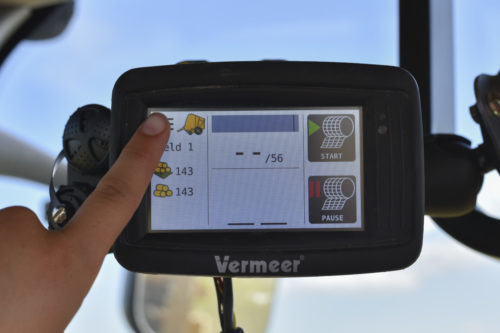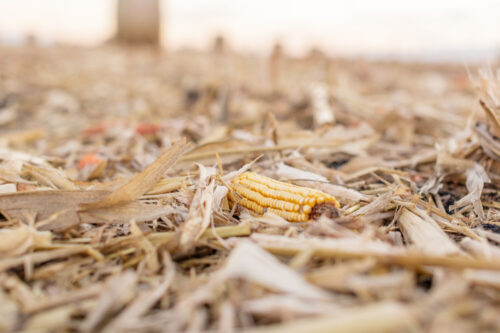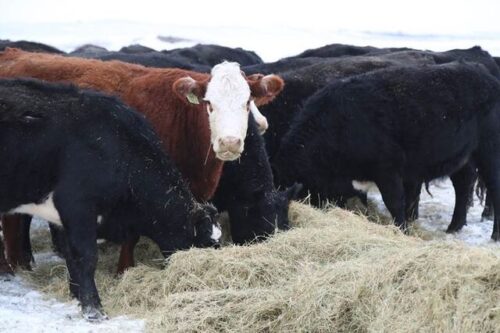Tedder Talks: What You Need to Know About Hay Tedding
May 2017
Turn back the clock 10 or 15 years and you’d likely be hard-pressed to find many hay tedders in the field. Although tedding hay has been around since at least the mid-19th century, it fell largely out of practice for many years in North America as hay producers perceived it to have a negative impact on the quality of hay—namely excessive leaf loss. Not all producers knew how to use a hay tedder. In recent years, however, tedding has made a powerful resurgence as producers come to understand the benefits tedding provides when performed correctly.
What is Hay Tedding Anyway?
Simply put, tedding is the function of lifting and separating hay in order to help speed up dry down time. Why is this important? According to Shawn Wang, Vermeer Corporation Product Manager, decreasing the time it takes to dry down forage gives hay producers greater flexibility and can result in higher quality forage.
“The most important function of tedding is fluffing the crop to promote air flow through the windrow, and also bringing the bottom of the windrow to the top and exposing it to sunlight, which leads to faster, more uniform dry down of the crop,” Wang said. “This is especially important when rain is in the immediate forecast, or if you’re in parts of the (United States) with climates that don’t typically provide good dry down weather. Tedding can sometimes help shave an entire day or two off of drying time.”
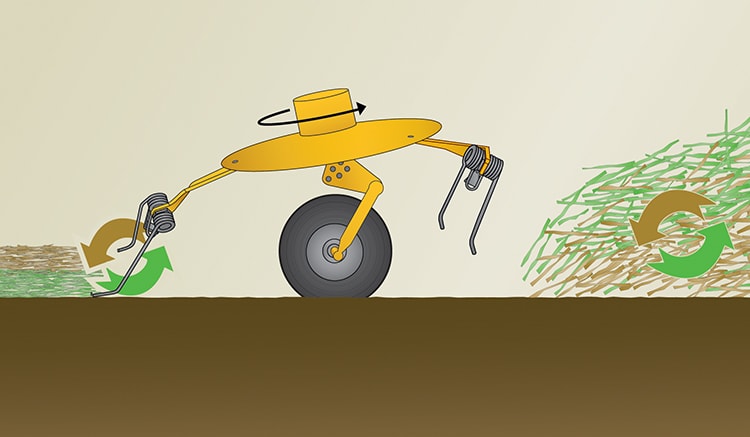
Where is Tedding Most Popular?
The art of tedding originated in Europe, where the “cool-summer humid continental” climate has impeded hay dry down times for generations. It continues to be a popular practice in Europe, and has recently seen a rise in popularity in cooler regions of the U.S.
“When tedding first arrived here in the U.S., it was mainly in northeastern states like New York and Pennsylvania, but year after year the tedding trend continues to spread west,” Wang said. “Now it’s a fairly common practice for hay producers in states like Wisconsin, Iowa, Illinois and Nebraska.”
Although Wang doesn’t believe tedding will ever fully catch on in western and southwestern parts of the country, he said unpredictable weather patterns have prompted more hay producers in these areas to consider adding a tedder to their fleet of hay tools.
The weather can be so unpredictable, according to Wang, that hay producers may purchase a tedder on account of the latest weather forecast.
“I’ve heard stories of farmers/ranchers who never really considered owning a tedder, until they get caught with hay on the ground when rain is predicted for the following day,” Wang said. “They will literally walk into a dealership that day and buy a tedder so they can get all of the hay put up right away. This allows them to put up higher quality hay before it gets rained on and they’re left with lower quality hay.”
The Best Time to Ted Hay
How long after mowing your hay field should you pull out the tedder? Wang said there is no universal rule of thumb as it depends on multiple variables, including the type of crop, your location, climate and preferred moisture content.
“The only thing that matters then is that you get the hay put up before the rain comes.”
“The next day (after mowing) has always made the most sense to me, because by then you have given the crop on top a day to wilt and dry, which makes it a good time to bring the green crop underneath to the top,” Wang said. “Of course, when there’s rain in the immediate forecast, everything you think you know goes out the window. The only thing that matters then is that you get the hay put up before the rain comes.”
What Crops Can You Ted?
Whereas tedding is highly recommended for grass hay, which tends to mat and dry slowly, some hay producers won’t ted alfalfa for fear of leaf loss. Wang said that while he understands that sentiment, the greater risk is leaving the crop in the field too long.
“Some hay producers refrain from doing any type of manipulation, whether it be raking or tedding, to alfalfa because the real value of that crop is in the leaves, and they want to limit how many of those leaves fall off,” Wang said. “That being said, would you rather have the alfalfa get rained on or lose a few leaves? If you time it right and ted alfalfa when it’s wetter, maybe a day after cutting it, the leaves are less likely to fall off than if you’re tedding it when the crop is drier.”
Choosing the Right Tedder Brand
There are numerous brands of varying durability to choose from, but Wang said tedders can be categorized in two primary classes. First, there are light duty tedders designed for part-time hay producers or those in regions where the need for tedding is less frequent. Then there are heavy duty tedders for high-capacity producers who need a more rugged machine built for the rigors of a busy hay season.
When considering which tedder is right for your operation, Wang recommends first deciding which class of tedder you need—a heavy duty tedder for heavy use or light duty tedder for part-time use. The other variable to consider is size; it’s important to choose a tedder that aligns with your mower and gives you the spread you want. Vermeer offers more options to find the hay tedder that fits your operation so, whether it’s the smaller, budget-conscious TD190 Tedder or the larger, hook-tine TE330 Tedder, it will be easy to find the perfect model.
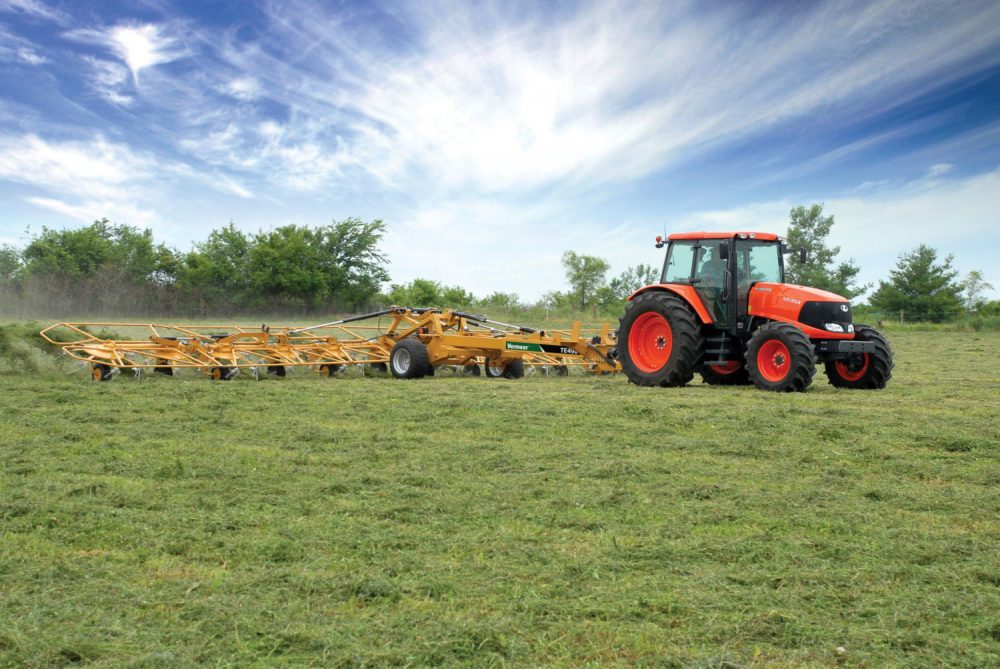
Choosing the Right Hay Tedder Tines
Tedders use a rotary motion to grab the hay with spinning tines and cast it out the back of the machine. Because tines are the only part of the machine to come into contact with the hay, the type of tine used can greatly impact machine performance, dry down time and machine maintenance. Wang said the patented design of Vermeer hook tines offers several advantages compared to the conventional straight tines found on most tedders.
“Because of the unique configuration and the special angle of Vermeer hook tines, they can pick up and spread larger amounts of crop compared to tedders equipped with straight tines,” Wang said. “Plus, Vermeer hook tines create an unprecedented ‘bottoms-up’ tedding action that rotates the hay for better dry down consistency. The positioning also allows you to handle higher speeds and output with minimal tine damage for better durability.”
Learn more about Hay Makin’ best practices like tedding here or visit Vermeer.com/tedders.




